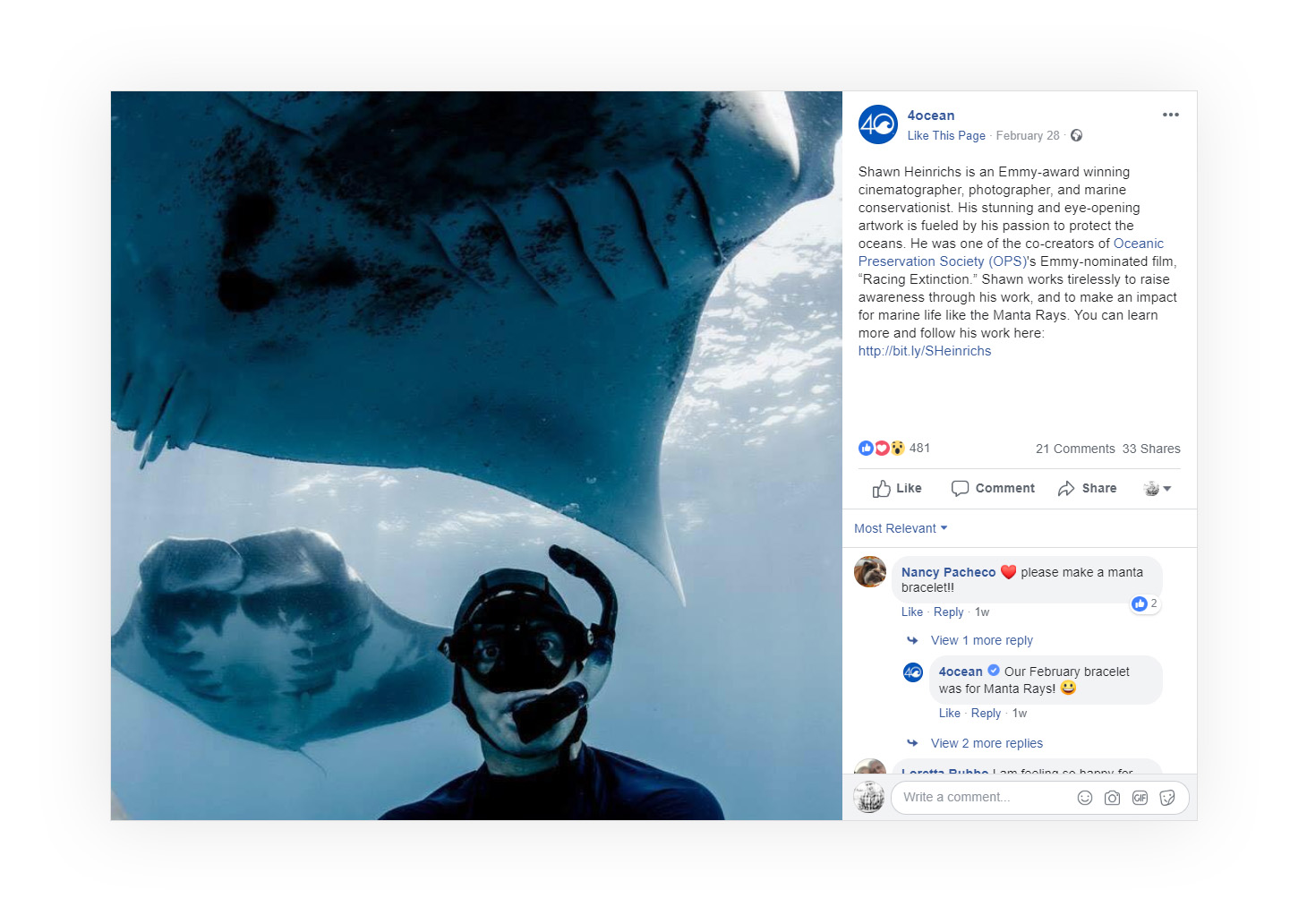Social media storytelling has become essential in marketing as a way to make content resonate with your audience. Marketers can harness the emotional power of stories within their content, and with the help of social media storytelling tools they can form strong, long-lasting relationships with their audience. So let’s learn how brand storytelling on social media showcases the human side of your business, boosts brand awareness, audience loyalty and conversions.
I don’t need to remind you that the days are gone when businesses thought it was enough just to have a presence on social media, i.e., as long as you had a page or a profile it didn’t actually matter what you posted!
We all understand now that content is king. And we need to post content that will engage our ideal audience. However, really smart businesses and marketers understand that it’s more than just posting good content. It’s about telling a story - and brands are using social media storytelling to engage their ideal clients and convert them into customers.
Brand storytelling on social media isn’t new. But using storytelling in your marketing is a great way to build relationships with potential customers, and social media is a great platform to do this on.
With the growing trend in Instagram stories and Facebook stories, it appears that the social platforms themselves understand the power stories have and are offering features to promote digital storytelling.
How to make storytelling in marketing work for you
Storytelling makes for more interesting posts, but there’s actually real science behind why we engage more in marketing that has a storytelling element.
1. Stories engage multiple parts of the brain and can even synchronize the brains of the listener and the person telling the story, according to Greg J. Stephens, Lauren J. Silbert, and Uri Hasson. In their report, Speaker-listener neural coupling underlies successful communication.
“The results showed that not only did all of the listeners show similar brain activity during the story, the speaker and the listeners had very similar brain activity despite the fact that one person was producing language and the others were comprehending it.”
2. Stories often provoke emotions in us, which leads us to get emotionally involved and we also remember details more vividly. I’m sure we can all remember a funny or sad or thought-provoking story, however, if I asked you to repeat facts or statistics from the last presentation you watched, it might be pretty hard to do. Think of the last content you liked, commented on or shared on social media, the chances are it was because it provoked an emotional response of some sort.
3. When a story is told well it can increase oxytocin, which leads to a greater feeling of trust in brands. We’ve all heard the phrase, “for a customer to buy from you they must know, like and trust you.”
4. Brands that storytell in their marketing develop deeper relationships with their audience, especially if the story is one that the prospect can relate with. You want them to read the story and either empathize with it or aspire to tell their own story like that!
5. Storytelling keeps the audience coming back for more. If your social media is filled with stories rather than just dry, informational posts then your audience will keep heading back to your page to follow the content.
3 things essential for successful social media storytelling
Before you start storytelling, there are three key things to consider regarding how to share a story on social media.
Know your audience
This is fundamental - you must understand your potential customer as deeply as you possibly can. You can create the best stories in the world, but if they don’t resonate with your potential customer, you won’t get the results you need.
Use your customers’ tone of voice
If you really want your stories to resonate with your ideal customer, then speaking in their tone of voice is key to harmonizing with them. Ideally, your potential customer will read your content and feel like they wrote it themselves!
Here’s a tip: interview existing and potential customers - ask them specific emotion-based questions like how they feel about a certain product feature or piece of content. Note the exact words they use and try and include them in your stories.
Make your customers the hero of your story
A marketing book that gives real insights into storytelling is Building a Story Brand by Donald Miller. It’s a brilliant guide for creating your own brand story. A key piece of advice states that making your customer the hero of the story is far more successful than making it all about you and your business. Always make the customer the center of the story and tell it from their point of view.
Digital storytelling techniques every marketer needs to know
Although online storytelling can be a great tool for selling, there is a temptation to only post stories that lead to sales. Look at online marketing as building a relationship - you wouldn’t marry someone after the first date, would you?
In the same way, customers are unlikely to make a purchase after seeing one just one piece of social media content - relationship building takes time and is an ongoing process.
Your first stories should be about building that relationship, adding value and introducing yourself and your business. Don’t focus on just getting them to buy. Your focus on these stories could be to encourage your audience to consume more content or to send them to a blog post you’ve written.
There are many ways to storytell on social media and many social media storytelling tools but let’s look at four ideas on how to best use social media for successful storytelling.
Facebook posts
Ever thought about writing a long post with an image to support the story? This can be a really effective tool. Rather than linking to a blog post, create a shorter story and put it straight into the post. You can then encourage interactions and conversations around it.

Instagram posts
I love storytelling on Instagram - this is where I tend to be most open and honest, and I always get a good reaction from my audience. I talk about business/personal challenges and achievements. My audience really relates to this and are inspired to comment, and engage with me.

Instagram Stories
As the name implies, this is a great way to tell your stories online and using this tool gives you the opportunity to show that you’re authentic and relatable - especially if you're comfortable on camera!
You can use a filter too - and that’s a real plus point in my book! Another great thing about Instagram stories is that you can use a range of polls, countdowns, gifs, music, and questions to make your stories far more engaging. Another really good strategy is asking people to respond to your stories by sending you a DM.
Videos
Videos are a perfect tool for telling stories. Firstly, video content works like a dream on social media and secondly, video is a great way to connect and get your message across quickly.
Upload it natively onto each platform and share clips via stories as teasers to build anticipation for the full video. A great example of a brilliant story video is this one from Dollar Shave Club. Not only was it done on a low budget but it also generated hundreds of thousands in sales.
How to structure your stories in the right way
There are some specific tactics to use when you write or produce your stories to ensure it’s successful.
But first, let's address what kind of subjects work well for brand storytelling. The answer is: anything to do with your industry or business sector.
However, three key subjects to include are:
Your Brand
Who are you? What do you stand for? What are your aspirations, motivations, vision, and values?
In such stories, the reader gets a feel for your business as a whole. A good brand storytelling example is Intel. They use their Instagram to tell their brand stories and use amazing images like this one to help tell the story.

Employees
Showcasing employees is a great way to put a face to your business and promote the business benefits. Marriott International does this really well through an Instagram account dedicated to their team. Marriott Careers showcases various team members from all over the world focussing on what makes them special and why they love what they do!

Customers
This is one of the best stories you can tell. As mentioned before, your customer is the hero, and you are their guide. So creating stories and case studies around a customer's journey and their success is a powerful story to tell.
Dove did an amazing storytelling campaign around Father's Day. It focused on male customers in the military who had to spend time away from their families. Dove created videos for YouTube which were packed full of emotion - believe me, as a military wife it was hard to watch this one without a tear in my eye!
The takeaway
A final few pointers!
I hope you feel inspired to go tell some stories of your own on social media now, so I’ll leave you with my five final tips for storytelling.
How do you want your audience to feel? As mentioned, emotion is a great way to connect with your audience so it’s always worth focussing on which feeling you want to create in your audience. Should they feel inspired, happy, motivated or nostalgic?
What's the objective of the story? All marketing activities must have an objective, even if that objective is just to develop a relationship, increase brand awareness or get email sign-ups and purchases.
Define the problem, conflict or issue. Talk directly to your customer's pain point - what problem do they have that your product/service will help them overcome? This also demonstrates to your audience that you understand them. Add in some emotionally charged words like “frustrated,” “overwhelmed,” etc.
How do you overcome the problem, conflict, issue? This is where your product or service saves the day, but remember, neither you nor your product is the hero - the customer is. Also, don’t forget to add emotion - how did they feel when they overcome the problem?
Give them a call-to-action, even though you’re creating stories don’t forget to add a call to action. People need to be guided towards their next action after viewing your content.
Tell us what stories you have created or stories that caught your eye.
About the Author
International speaker, TEDx speaker, podcaster, author and Founder of agency THW Marketing, Teresa, works with businesses, entrepreneurs, and marketers to help them enhance their social media and marketing efforts. With a degree (BA Hons) in Marketing, Teresa has spent the last 15 years in Marketing working with international brands such as Land Rover, Rightmove, and Leadpages.
Teresa hosts a weekly podcast called ‘Social Media Marketing Made Simple’ and has interviewed the likes of Amy Porterfield, Pat Flynn, James Wedmore, Jasmine Star, and Brian Fanzo. She is also recognized alongside some of the world’s social media thought leaders and writes for Social Media Examiner, as well as trains people all over the world.
Editor's Note: This article was originally published on socialbakers.com. Any statistics or statements included in this article were current at the time of original publication.
























